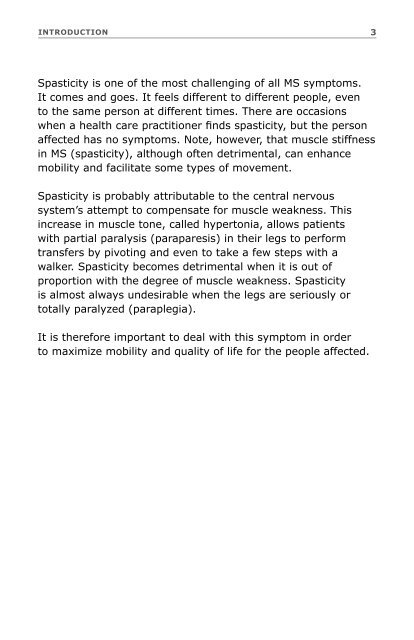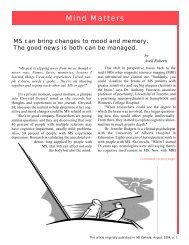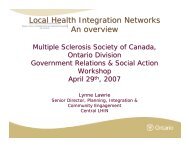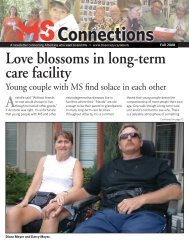Spasticity, Mobility Problems and Multiple Sclerosis
Spasticity, Mobility Problems and Multiple Sclerosis
Spasticity, Mobility Problems and Multiple Sclerosis
Create successful ePaper yourself
Turn your PDF publications into a flip-book with our unique Google optimized e-Paper software.
InTroducTIon<br />
<strong>Spasticity</strong> is one of the most challenging of all MS symptoms.<br />
It comes <strong>and</strong> goes. It feels different to different people, even<br />
to the same person at different times. There are occasions<br />
when a health care practitioner finds spasticity, but the person<br />
affected has no symptoms. Note, however, that muscle stiffness<br />
in MS (spasticity), although often detrimental, can enhance<br />
mobility <strong>and</strong> facilitate some types of movement.<br />
<strong>Spasticity</strong> is probably attributable to the central nervous<br />
system’s attempt to compensate for muscle weakness. This<br />
increase in muscle tone, called hypertonia, allows patients<br />
with partial paralysis (paraparesis) in their legs to perform<br />
transfers by pivoting <strong>and</strong> even to take a few steps with a<br />
walker. <strong>Spasticity</strong> becomes detrimental when it is out of<br />
proportion with the degree of muscle weakness. <strong>Spasticity</strong><br />
is almost always undesirable when the legs are seriously or<br />
totally paralyzed (paraplegia).<br />
It is therefore important to deal with this symptom in order<br />
to maximize mobility <strong>and</strong> quality of life for the people affected.<br />
3

















